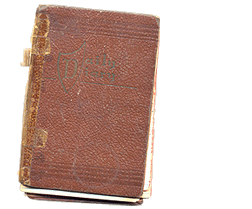
Besides the obvious, enormous challenges the new organization faced, it also needed a permanent location (Connecticut was a front-runner for a while) and--of course--a lapel pin. That's where the 38-year-old McLaughlin entered the picture. Formerly a designer for the Office of Strategic Services (of which, by the way, my father, Dave, was a member), McLaughlin proposed other ideas before hitting upon the one you see above:
The United Nations emblem had a difficult birth. Mr. McLaughlin, in his pamphlet, recalled that the initial task was to fit a pictorial image, along with the words “The United Nations Conference on International Organization, San Francisco, 1945,” on a round button measuring just 1 1/16 inches across.
Rejected prototypes included a globe surrounded by chains intended to represent nations linked in peace. “Linked in peace, but also a world in chains,” Mr. McLaughlin noted. Another image showed a chimneylike brick structure, bound by the “mortar of cooperation,” with an olive branch poking out. “Could be a trademark for the Structural Clay Products Institute,” Mr. McLaughlin wrote.
Eventually Mr. McLaughlin’s idea for a map projection of the continents, with the United States front and center on the vertical axis, won out. Ivan Spear, a team member, softened the image by adding laurel branches, an idea he borrowed from the Philco logo. Mr. McLaughlin, recalling that the laurel symbolized victory, substituted olive branches, a symbol of peace.
On Dec. 7, 1946, Mr. McLaughlin’s design, with slight modifications proposed by him, was adopted as the official United Nations seal and emblem.
As a graphic designer myself, I envy the great opportunity McLaughlin was given and I have tremendous admiration for the work he ultimately created--probably one of the world's most recognizable symbols, and one of the best.

Thank you for this history! Not to be morbid, but one reason I love to read obituaries is that they recall events we've all come to take for granted, never stopping to consider their initial inception...
ReplyDeleteThank you, Kris.
ReplyDelete